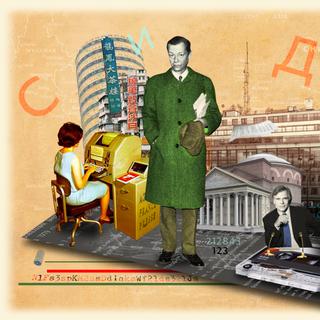


Agence France-Presse, a prime target for the KGB
Investigation'Cold War moles' (Part 5/5). Between 1956 and 1982, the Soviet intelligence agency recruited six AFP journalists as agents.
On Paris's Place de la Bourse, opposite the columns of the Palais Brongniart, stands another building steeped in history: the headquarters of Agence France-Presse (AFP). Generations of journalists have worked here, and many others continue to send out their news reports to the world's media outlets from this institution. AFP was comprised of just a few hundred journalists when it moved into the building, in 1944. Today there are almost 2,000 of them, spread across France and abroad.
During the Cold War, this discreet omnipresence and central role in the dissemination of information made the agency a prime target for the Soviet intelligence agency. KGB archives, handed over to the British in 1992, by defector Vassili Mitrokhin after the fall of the USSR, now provide previously unpublished information on Soviet spies' level of penetration within AFP. The Mitrokhin files, which Le Monde was able to consult in Cambridge, England, reveal that the KGB recruited six AFP journalists as agents between 1956 and 1982. The names of three of them can be revealed.
The most accomplished of them – always elegant, deceptively nonchalant – left his mark on the institution's memory through the senior positions he held therein. His name was Francis Lara. Born in Paris on August 3, 1925, he grew up in the world of the press. His father, René Lara, was the director of Le Gaulois, a daily newspaper read by the aristocracy and upper middle classes, which merged with Le Figaro between the world wars. After obtaining an English degree, he joined AFP in 1946. Starting at the bottom of the ladder, his career ended at the top, in 1982, when he simultaneously held the positions of head of news and deputy to the agency's CEO.
Code name 'Sidor'
You have 87.79% of this article left to read. The rest is for subscribers only.
